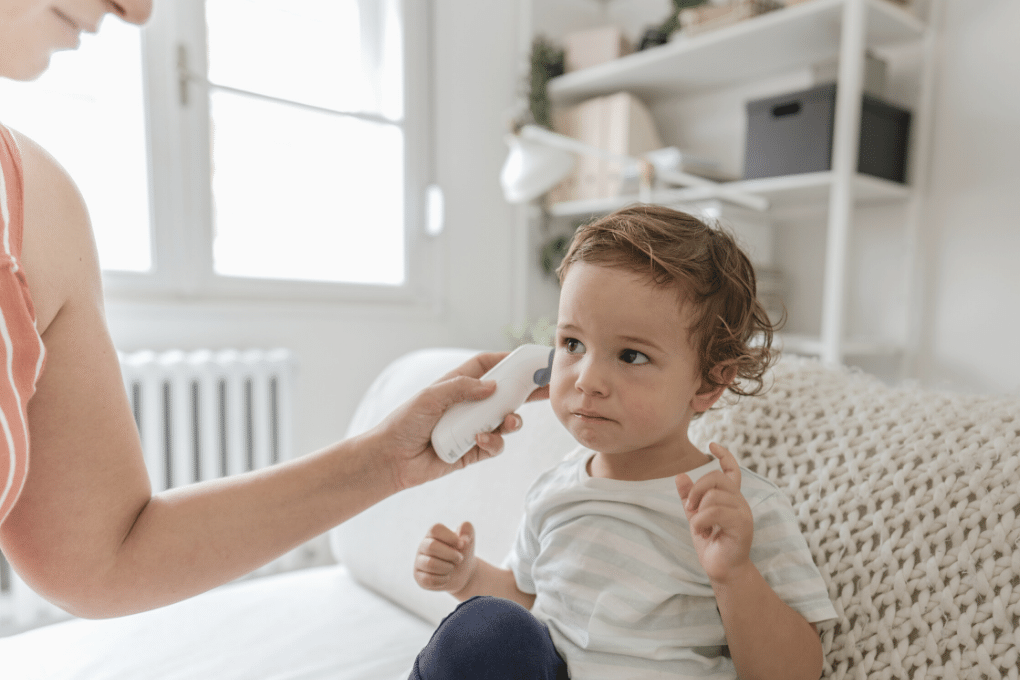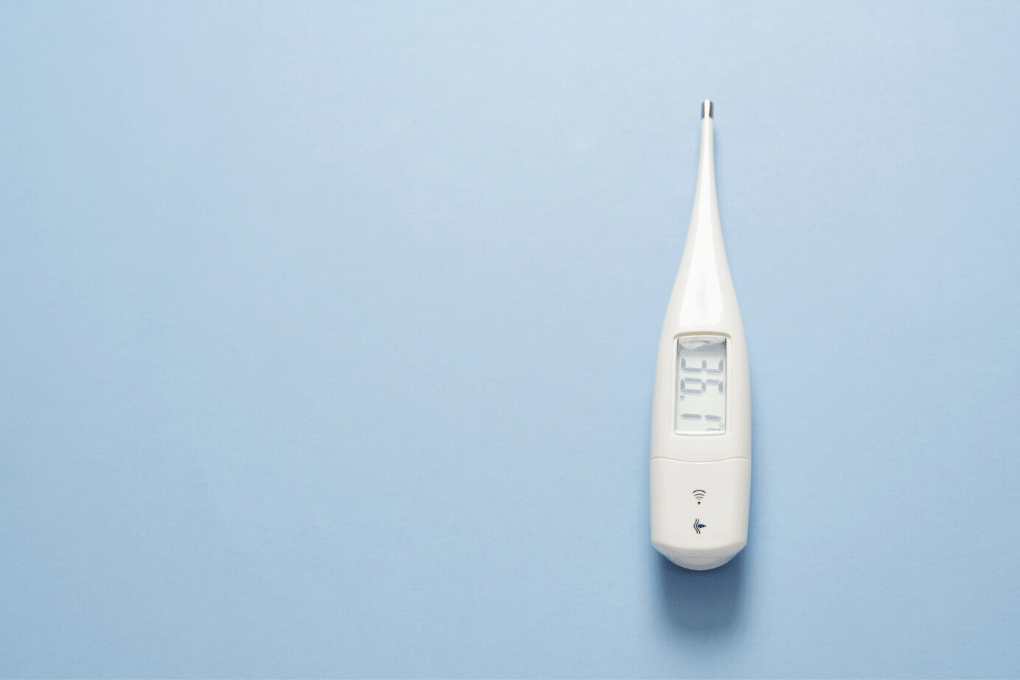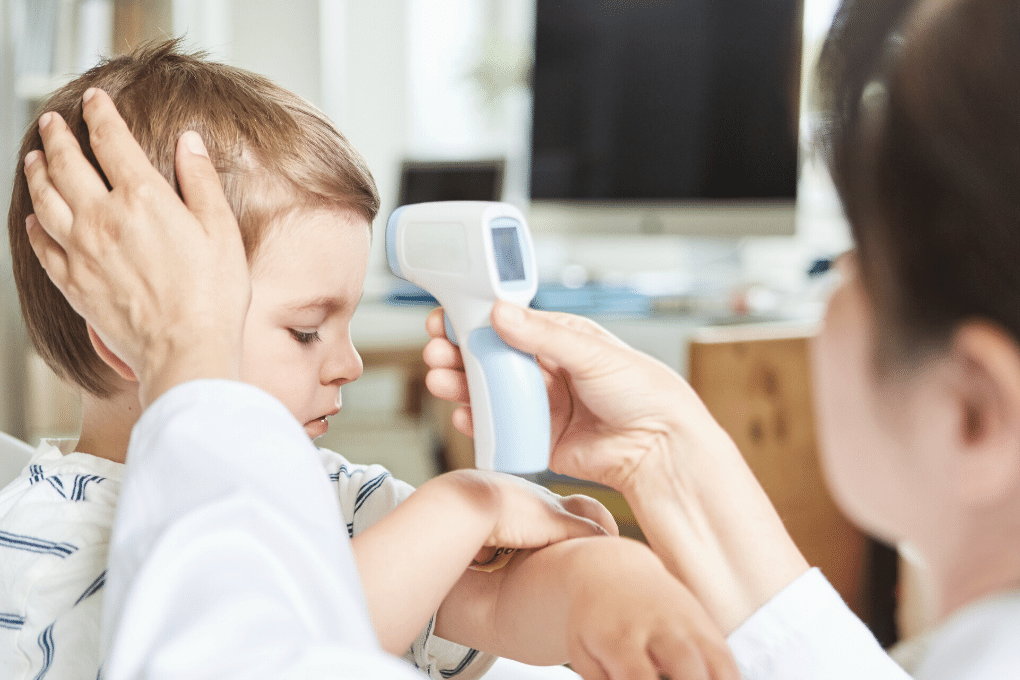Family Health
Choosing the best thermometer for your family
There are heaps of thermometers on the market with all sorts of fancy features. There’s contactless forehead thermometers, ear thermometers, thermometers that can check water surfaces and room temperatures, and ones that even link to your phone for ongoing monitoring.
So how do you choose which one is best for your family? Do you need to fork out a lot of money for the fancy ones or is the simple under the arm one good enough? Here’s what you need to know before buying your thermometer.
What to consider when taking your child’s temperature?
A temperature reading is just one symptom to look for. If your child is unwell, there are usually other symptoms present such as lethargy, nausea and/or vomiting, headache, muscle aches, pain or weakness, loss of appetite, or a whole range of other symptoms depending on the illness.
It’s important for parents to look for these other symptoms and not hesitate to contact their doctor or pharmacist even if the temperature reading hasn’t come back high. Relying solely on a temperature reading may mean missing a potentially serious illness.
You should also consider your child’s normal baseline temperature. Different children will have different healthy baseline temperatures so it’s a good idea to take note of this when your child is well. Their temperature will tend to be lower in the morning compared to the afternoon or if they have been running around.

It’s important to note that different body locations can have slightly different ranges of temperature. For example rectal and ear readings are usually higher than oral readings while forehead and underarm readings are usually lower.
If you are unsure whether to see your doctor, you can always call your local pharmacist and chat with them. They will ask you a few questions about your child’s symptoms and will refer you to the doctor or hospital if need be. They are a great resource to utilising and they are free!
How else can you identify a fever?
There are some other possible signs of fever that you can look out for. If you touch your child’s tummy with the back of your hand, it will tend to feel like they are burning up. You can also check if they have flushed cheeks.
We also recommend looking for signs of dehydration. To do this you can gently pinch the skin on the top of their forearm or back of their hand and let it go. If it is slow to fall back into place, it is usually a sign of dehydration. Another sign is dark yellow or orange urine. The more hydrated they are the clearer their urine will be.

The accuracy of your thermometer
Do you need to spend a lot of money on a fancy thermometer to get a reliable temperature reading? The short answer is no. In fact, the digital probe thermometers (under the arm or tongue ones) are some of the most accurate.
According to a recent review by Choice, they found the digital probes have an accuracy reading within 0.1°C. Anything under 0.3°C is considered good.
In this review, Choice also found 6 out of the 15 thermometers tested did not meet their own accuracy claims. All of these 6 models that failed their own accuracy claims were either infrared forehead thermometers, ear thermometers, and Nurofen’s Feversmart Temperature Monitor.
They stated that “some of the personal thermometers were off by as much as 0.83°C, meaning that a healthy temperature of say, 37.4°C could be misread as a fever of 38.2°C, causing unnecessary alarm”. The alternative is also possible where a reading could come back as normal in a child that has a slight fever.
How to choose the best thermometer for your family?
This depends on a few different things and your own personal preference. Each thermometer comes with its own pros and cons.
Digital Probe thermometer
The digital probe thermometers are usually very accurate and the most affordable. The downside is they require you to put it under your child’s arm or under their tongue. So it can be tricky sometimes not to disturb your little one when they are sleeping or if they are wriggling around.
If you choose this option, try getting one that takes the reading within 3 to 10 seconds. Some can take up to 30 seconds which is a long time when your child doesn’t want to sit still.

Infrared Forehead
Forehead thermometers usually cost more than the digital probes and tend to have greater variability in reading (possibly due to user error or because they haven’t met their own accuracy standards as stated above). They can also be influenced by sweat, skin type, and whether or not the child has just had a hot shower or been running around.
The major benefit of the contactless thermometer however is that they are quick and they don’t disturb your child while they sleep. If you are using them as a guide only and are considering other presenting symptoms then this may be best for your family.
Ear thermometers
Ear thermometers also provide speedy readings but they require the parent to position them correctly in the ear to get an accurate reading. These might not be the most suitable for use in infants because infants have small ear canals making it more difficult to position correctly.
Takeaway Message
Whether you choose to get an infrared thermometer or a digital probe one, make sure you follow their instructions for how to take an accurate reading. For instance, don’t take a forehead reading immediately after a bath or hot shower, and don’t do an oral probe reading after eating hot or cold food.
The takeaway message is to be aware of the potential inaccuracy of some thermometers. Price is not necessarily an indicator of a good thermometer and a basic $10 probe thermometer may give you the most accurate reading.
Regardless of which thermometer you choose, it’s important not to rely solely on the temperature reading but to also consider other symptoms. If ever in doubt contact your healthcare provider straight away.

Alexandra Shepherd
Pharmacist
This blog post was written by Alexandra Shepherd, Pharmacist at Nourish Health



